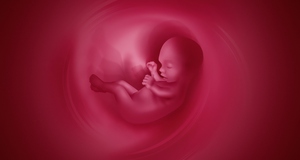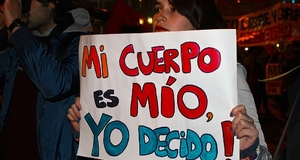Free Speech and Abortion Clinics: Protesters, Security, and Patients' Rights
By
2012, Vol. 4 No. 03 | pg. 1/2 | »
IN THIS ARTICLE
KEYWORDS
Since Roe v. Wade affirmed the constitutional right to abortion in 1974, antiabortion activists have used various forms of protesting and violence to disrupt reproductive health clinics which provide abortion care.1 While there is an appropriate level of protesting on both sides that must be allowed (as it should), activists often engage in forms of expression that cross the line from free expression into harassment and threats. This paper examines the historical and current practices of protesters at abortion clinics, existing legal regulations, and ways to further address antiabortion harassment and violence without infringing on demonstrators’ First Amendment rights.2 Abortion Clinics in the U.S.There are somewhere between 600 and 900 clinics across the United States providing abortions to women.3 Slightly under half of these are specialized abortion clinics, which account for 70% of abortions performed in the US. The rest are “nonspecialized clinics” which provide other reproductive health services such as Planned Parenthood health centers; these account for an additional 24% of abortions.4 5 Clinics which provide abortions are not equally distributed throughout the country. Abortion providers exist in only 13% of counties in the United States, and are disproportionately located in cities: only 3% of “nonmetropolitan” counties host any kind of provider.6 With respect to speech, this means that clinics which are likely to become venues for protesters are often located in densely populated areas, providing relatively easy access and often a quite public venue for antiabortion activists to express their views.It is worth noting that not all clinics which receive protesters actually provide abortions. The Planned Parenthood Federation of America operates 865 health centers across the country. Although only a fraction of these actually provide abortion services, the organization’s prominence on the national stage makes all of its health centers ripe targets for protests regardless of the services provided at a particular clinic. Antiabortion speech at clinics is a reality for the majority of abortion providers across the country. According to the Guttmacher Institute, a leading think tank on sexual and reproductive health, 87% of abortion clinics and 63% of nonspecialized clinics experienced picketing in 2008, representing a slight increase since 2000 (the last time data was collected). This protesting is regionally disproportionate: 85% of midwestern clinics and 75% of southern clinics experience picketing or other forms of harassment, compared with 48% of northeastern clinics and 44% of western ones.7 Abortion Clinic ProtestersWhile it is difficult to find demographic information on antiabortion protesters, some useful data can be extracted by evaluating the largest antiabortion protest campaign. 40 Days for Life is a religious organization based in Fredericksburg, Virginia which spearheads a coordinated biannual campaign of “prayer and fasting, constant vigil, and community outreach” at abortion clinics. In Fall 2011, the organization was coordinating vigils at 301 clinics in the United States, Canada, Argentina, and Germany. It lists 30 written endorsers on its website; of these, there are 15 men and 15 women, and 27 of the 30 endorsers are white.8 The organization’s leadership team consists of three white men and two white women.9 While the website does not explicitly state the religious affiliation of these individuals, their descriptions reveal a common Christian faith, and many of them are likely Catholic given the Catholic Church’s stance on abortion and the Lent-inspired nature of the event. During the 40 Days campaign and throughout the year, protesters most commonly engage in non-obstructive prayer outside of clinics, which may or may not be accompanied by physical signage. This is clearly a protected form of political speech, and as long as they do not violate any other laws (such as trespassing) these protesters are well within their First Amendment rights. However, a substantial proportion of protesters go further: 42% of abortion clinics and 18% of nonspecialized clinics report that picketers engaged in direct contact with patients (a practice called “sidewalk counseling” by its proponents) and/or attempted to block patients from entering the clinic. A very small number of protesters go further and enter potentially criminal territory, with some clinics reporting vandalism, picketing of staff homes, bomb threats, and the posting of patient photographs on the Internet.10 These actions raise questions about the boundaries of speech, and what is really protected under the First Amendment before it begins to infringe on the rights of others. J.R. Searle writes that speech is an “attempt to communicate things to [his] hearer by means of getting [the listener] to recognize [the speaker’s] intention to communicate just those things.”11 While Searle writes specifically of spoken language in that context, all of the actions identified here can fall under his definition: each involves a spoken or written communication that is intended to convey the protester’s deep disapproval of abortion to the hearer (or observer), through increasingly direct and emotionally charged means. Since all of the actions described earlier can be considered speech, the question is where to draw the line between protected speech and speech which should or must be restricted. To understand this, it is helpful to examine the existing laws and regulations affecting the speech of antiabortion protesters at clinics, how they are enforced, and how these regulations fit into free speech jurisprudence. Current Laws and EnforcementThe most significant and well-known federal law restricting the speech of antiabortion protesters is the Freedom of Access to Clinic Entrances (FACE) Act. Signed into law by the Clinton administration in May 1994, the FACE Act “makes it a federal crime to use force, the threat of force, or physical obstruction to prevent individuals from obtaining or providing reproductive health services.” 12 The law provides criminal and civil penalties; the U.S. Department of Justice investigates and files charges for criminal violations, while any individual or facility that has been victimized in violation of the Act (as well as any federal, state, or local government) can bring a civil suit. FACE specifically avoids infringement of First Amendment rights by focusing on criminal conduct such as vandalism, threats, assault, and trespassing, and has been upheld by appeals courts in every circuit.13 Several states also have local laws that restrict certain forms of speech at abortion clinics. Three states (Colorado, Massachusetts, and Montana) and a handful of cities have “buffer zone” laws which physically restrict the movement of protesters within a certain distance of building entrances. Maine, Washington, and the District of Columbia also proscribe certain levels of noise outside of clinics.14 These laws have been held to be constitutional “time, place, and manner” restrictions under Madsen v. Women’s Health Center, Inc,15 Schenck v. Pro-Choice Network of Western New York, and Hill v. Colorado.16 California, New York, and Washington also have their state-level versions of the FACE act, and 10 other states have other statutes restricting harassment at clinics and other healthcare facilities.17 Practical RestrictionsThere are two additional practical restrictions which have some connection to legal protections and limitations, but are not necessarily part of free speech jurisprudence or enforced by police. The first of these is trespassing laws. Protesters’ First Amendment rights only apply in public areas; clinics and their landlords have no obligation or desire to allow protesters to cross their private property lines. The nature of property lines can have a major impact on the efficacy of protesters’ speech and their ability to reach their intended audience. For example, Potomac Family Planning in Rockville, Maryland is located in a business park, with its entrance in the center of a parking lot and facing away from the street. At that clinic, protesters cannot go past the edge of the driveways, putting them easily over a hundred feet from the clinic entrance and the patients entering the clinic. By contrast, the Planned Parenthood health center in downtown Washington, DC is located in a building on land leased from the city, meaning that protesters have free access to the front lawn and sidewalk up to the front door of the clinic.18 These two physical settings provide radically different venues for protesters’ speech without any legal or constitutional effects. The second tool used by some clinics to counteract the effects of antiabortion protesters, especially ones that engage in “sidewalk counseling,” is volunteer clinic escorts19. These are individuals who, in coordination with the clinic, provide an easily identifiable pro-choice presence at the clinic to reassure and comfort visitors. Clinic escorts also provide a physical barrier between visitors and protesters, walking with visitors and speaking to them in order to distract from the (often very loud and insistent) protesters as the patient approaches or leaves the building. In essence, escorts are part of a “marketplace of ideas” solution to the speech of protesters, providing both a voice for the clinic (albeit a brief one) and a method of delivering visitors safely into the building where they can be exposed to the full speech potential of the clinic itself. The FACE Act specifically includes clinic escorts in the protected category of “individuals obtaining or providing reproductive health care services.”20 These two cases demonstrate that there are a variety of practical considerations in freedom of assembly and free speech, not solely legal ones.Continued on Next Page » Suggested Reading from Inquiries Journal
Inquiries Journal provides undergraduate and graduate students around the world a platform for the wide dissemination of academic work over a range of core disciplines. Representing the work of students from hundreds of institutions around the globe, Inquiries Journal's large database of academic articles is completely free. Learn more | Blog | Submit Latest in Political Science |


















